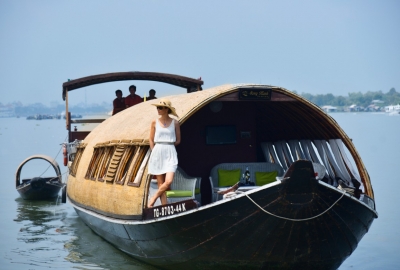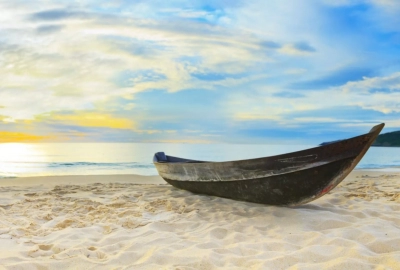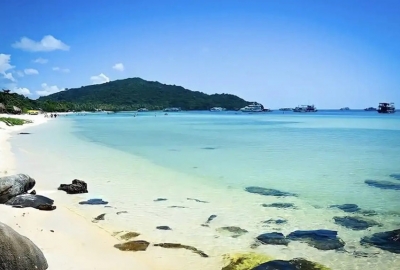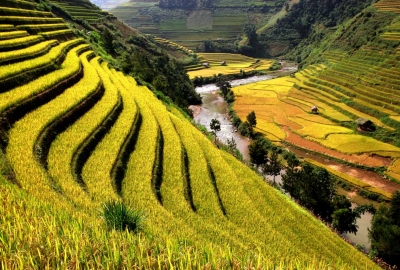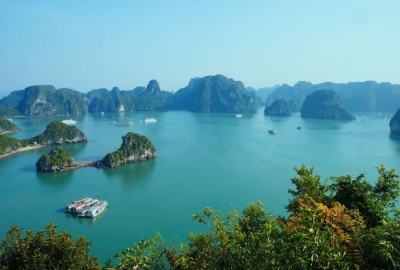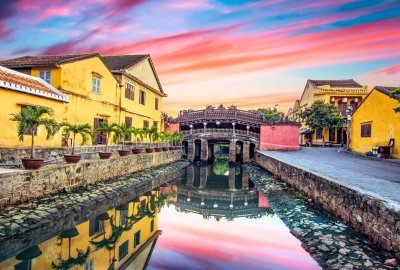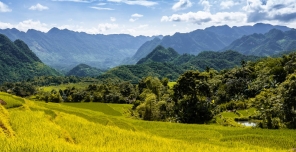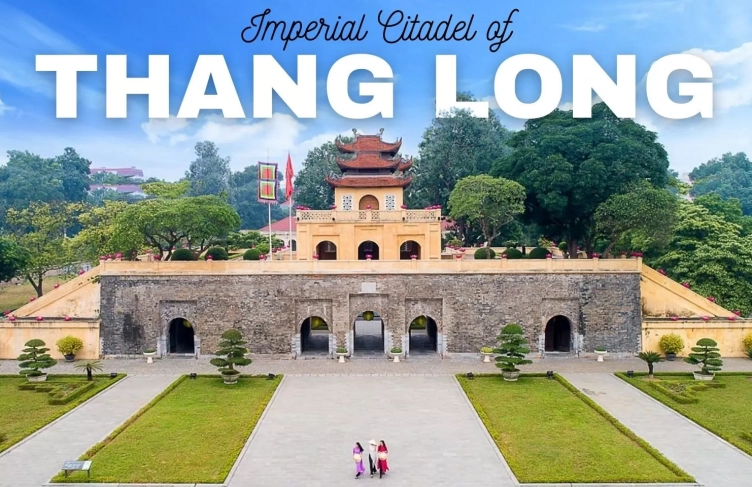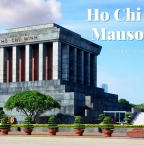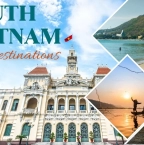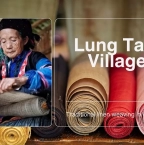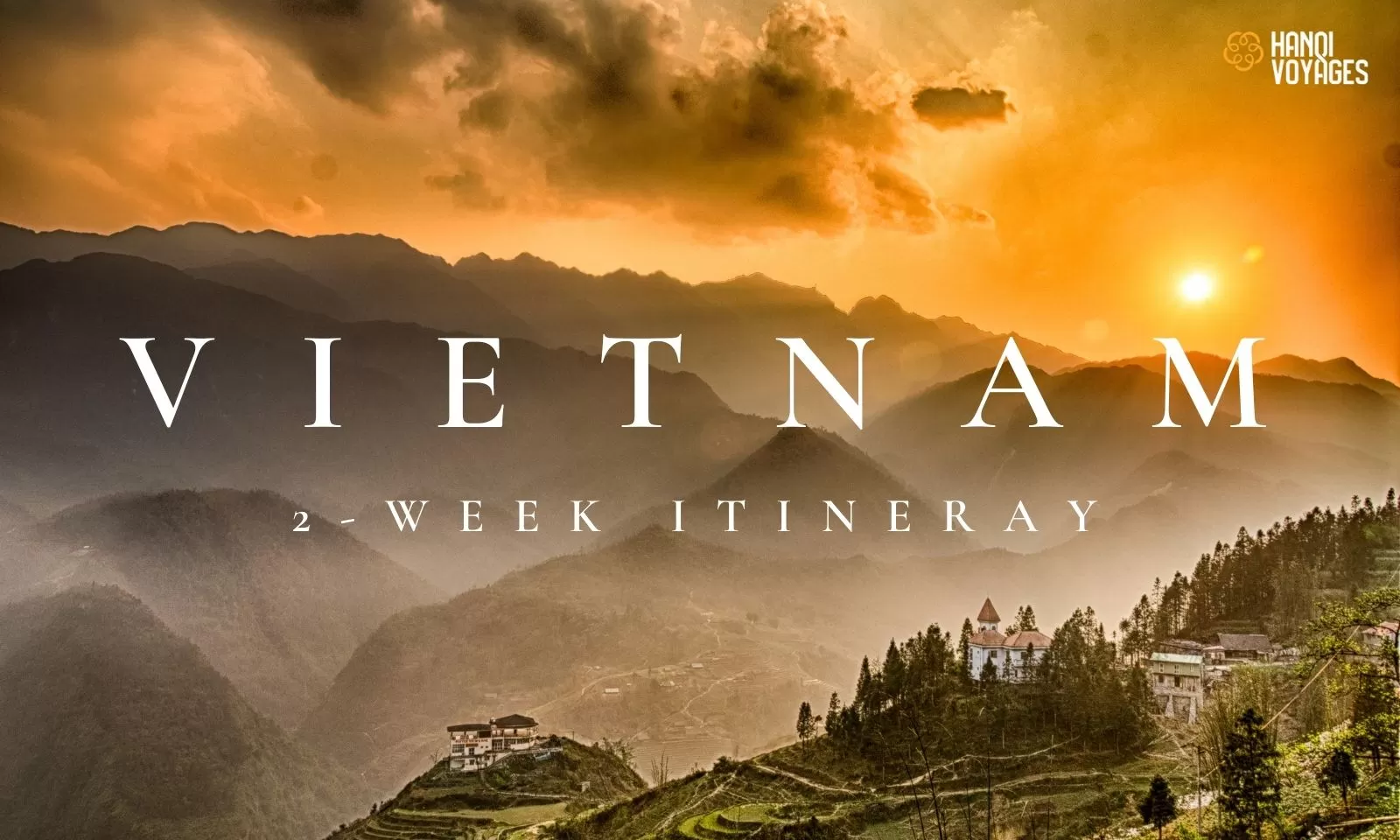
Vietnam 2-week itinerary: Must-do activities and experiences
Experience the best with a Vietnam 2-week itinerary, featuring must-do activities and experiences. Explore scenic routes, enjoy local cuisine, cruise along peaceful bays, trek through valleys, and visit famous places for a memorable journey.

Traveling to Vietnam is an incredible journey filled with diverse landscapes, rich flavors, and exciting experiences. With this Vietnam 2-week itinerary, you might be wondering how to make the most of your trip. From Hanoi’s bustling streets to peaceful bays, charming villages, and dynamic cities, every destination has something unique to offer. In this article, we provide a well-planned itinerary with must-do activities and experiences.
Let Hanoi Voyages design a smooth, tailor-made adventure just for you!
Table of Contents
- When is the best time to visit Vietnam?
- What to see and do in the Vietnam 2-week itinerary?
- Visit Hanoi’s Old Quarter
- Boat ride in Ninh Binh’s scenic landscapes
- Cruise in Halong Bay
- Discover the caves of Phong Nha
- Explore the imperial landmarks of Hue
- Relax on the beaches of Da Nang
- Stroll through Hoi An’s ancient town
- Uncover the ruins of My Son Sanctuary
- Savor the flavors of Vietnam’s local cuisine
- Two weeks in Vietnam: The perfect itinerary for a memorable trip
- How much does a Vietnam 2-week itinerary cost?
- Travel tips for a Vietnam 2-week itinerary
When is the best time to visit Vietnam?
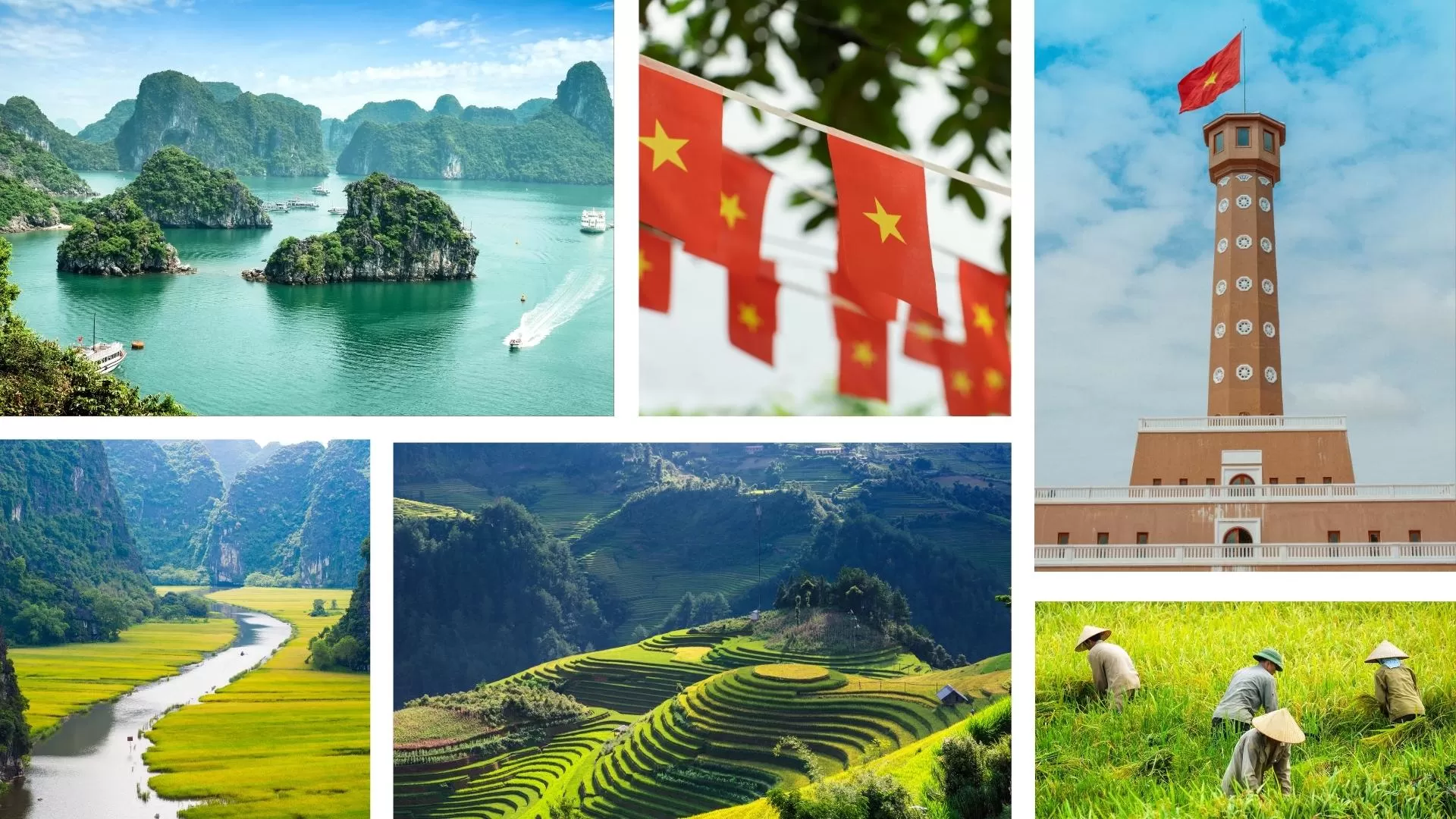
Vietnam offers year-round travel opportunities thanks to its diverse climate. However, certain times are more suitable depending on the regions and activities in your Vietnam 2-week itinerary.
For those planning a trip covering multiple regions, this period is ideal. The weather is mostly dry with pleasant temperatures, making it easier to enjoy outdoor activities without extreme heat or heavy rain.
Northern Vietnam: The weather ranges from 15 to 25°C (59-77°F). Winter (December - February) can be chilly, especially in the mountains, with temperatures sometimes dropping below 10°C (50°F).
Central Vietnam: The dry season brings comfortable temperatures between 20 and 30°C (68-86°F). This period is ideal for sightseeing as the rainy season has ended.
Southern Vietnam: The dry season offers warm temperatures 25 - 35°C (77-95°F), perfect for exploring floating markets and relaxing on the beaches.
👉 For those looking for pleasant weather with minimal rainfall, October to April is a great time for a Vietnam 2-week travel plan.
What to see and do in the Vietnam 2-week itinerary?
A well-planned Vietnam 2-week itinerary includes a mix of bustling cities, scenic landscapes, and historical sites. This journey takes travelers through lively streets, peaceful rivers, ancient temples, and coastal towns. Below are some of the best places and activities to include in your trip.
Visit Hanoi’s Old Quarter
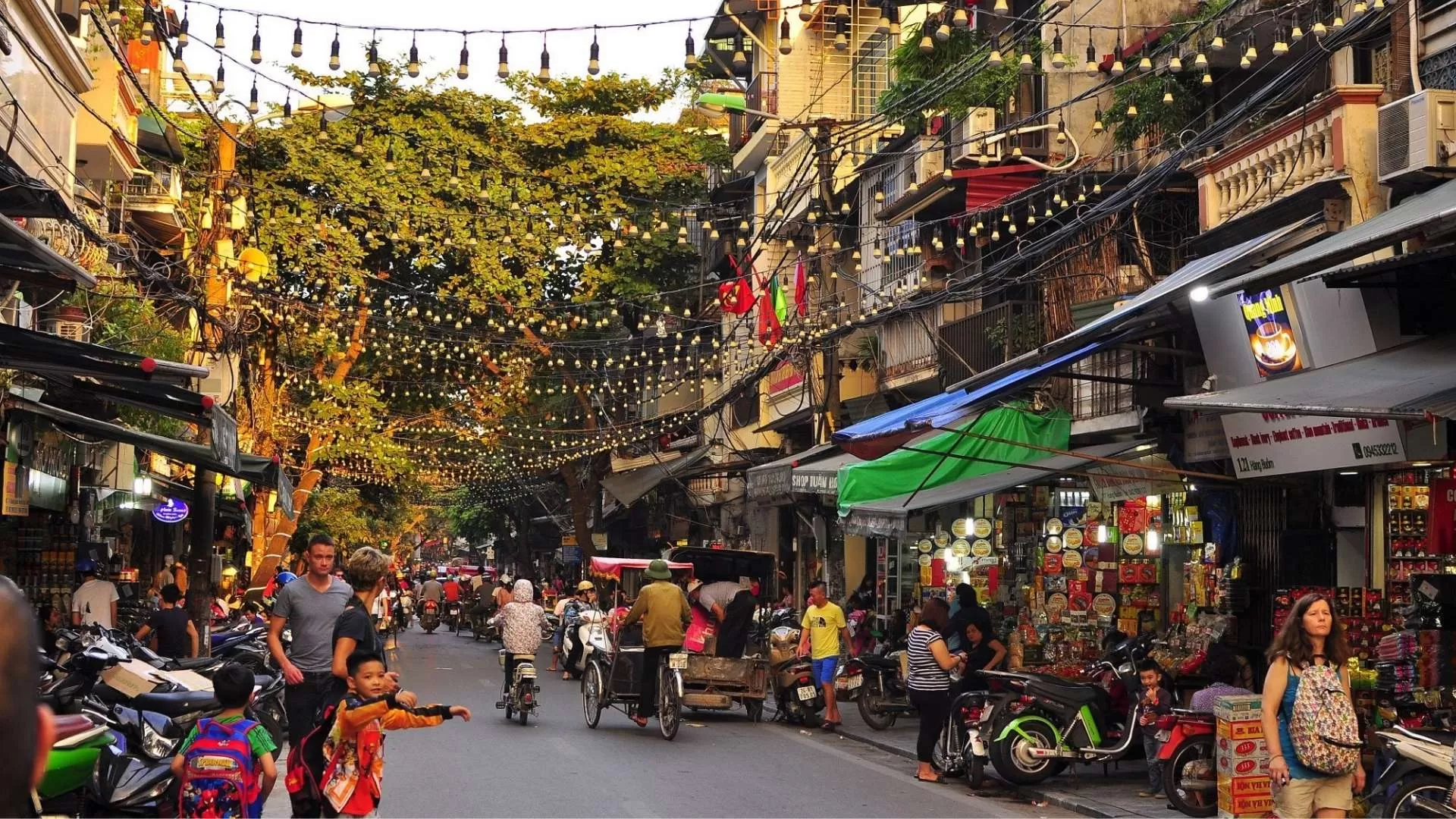
Start your Vietnam 2-week itinerary with Hanoi, the capital of Vietnam, is a city full of energy, where modern life blends with traditions. The Old Quarter is one of the most iconic areas, with a maze of narrow streets filled with small shops, street food vendors, and colonial-style buildings. Walking through this district gives visitors a chance to see daily life unfold, from vendors carrying baskets of fruit to craftsmen making traditional products.
A must-visit spot in this area is Hoan Kiem Lake, a peaceful escape in the center of the city. Nearby, Ngoc Son Temple sits on a small island, connected by a red bridge. The Old Quarter is also the best place to try local dishes like pho (Vietnamese noodle soup) and egg coffee, both of which are famous in Hanoi.
Boat ride in Ninh Binh’s scenic landscapes
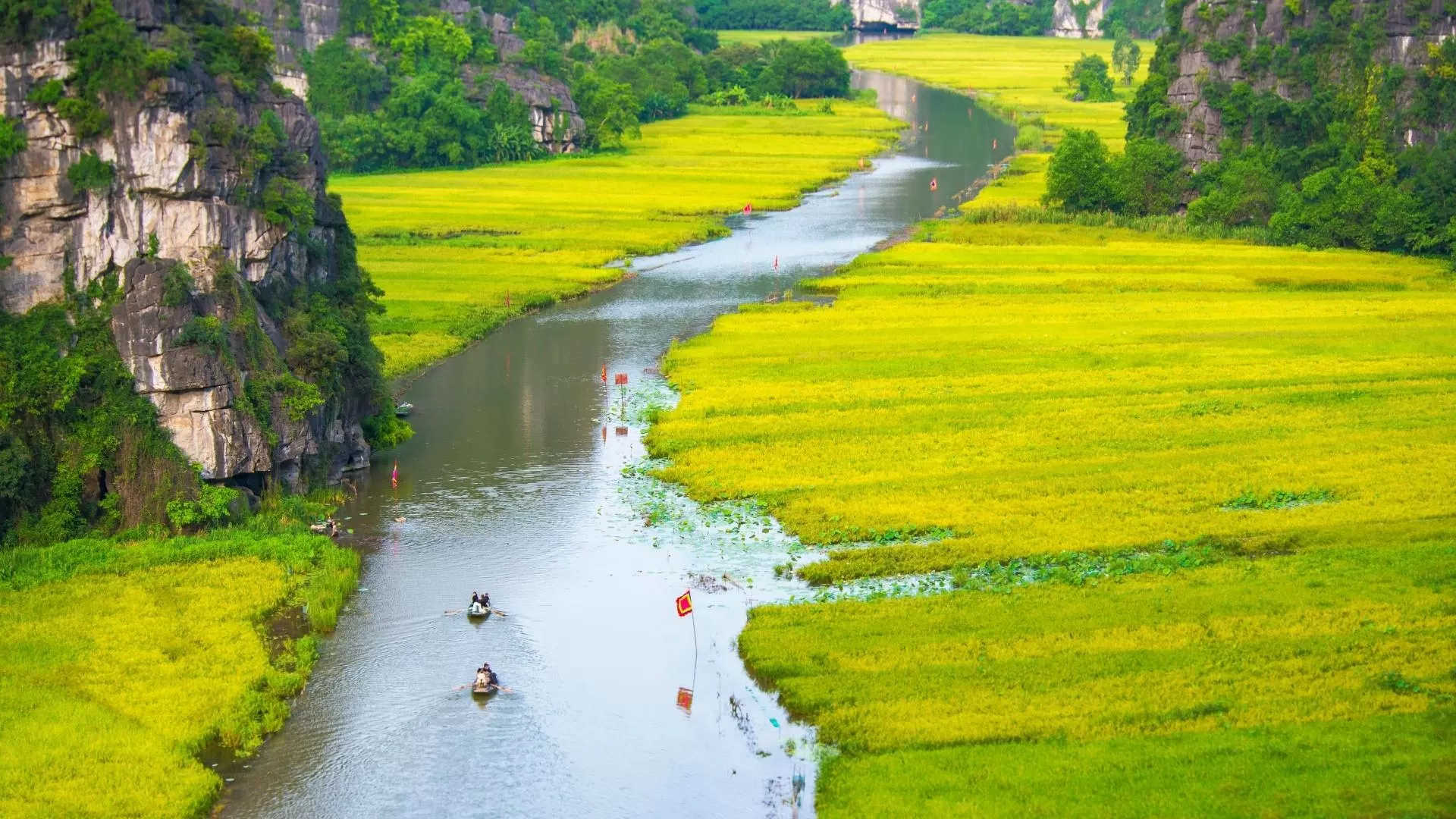
The next place you should visit in the Vietnam 2-week itinerary is Ninh Binh, often called "Ha Long Bay on land", a quiet countryside destination known for its limestone mountains, winding rivers, and rice paddies. A boat ride through the Tam Coc or Trang An waterways is one of the best ways to take in the scenery.
As the boat moves through the river, travelers pass through caves, temples, and towering cliffs. The peaceful setting makes it a great break from the fast-paced cities. Many boat rides are rowed by locals using their feet instead of hands, a unique technique that has become a special feature of the experience.
Cruise in Halong Bay
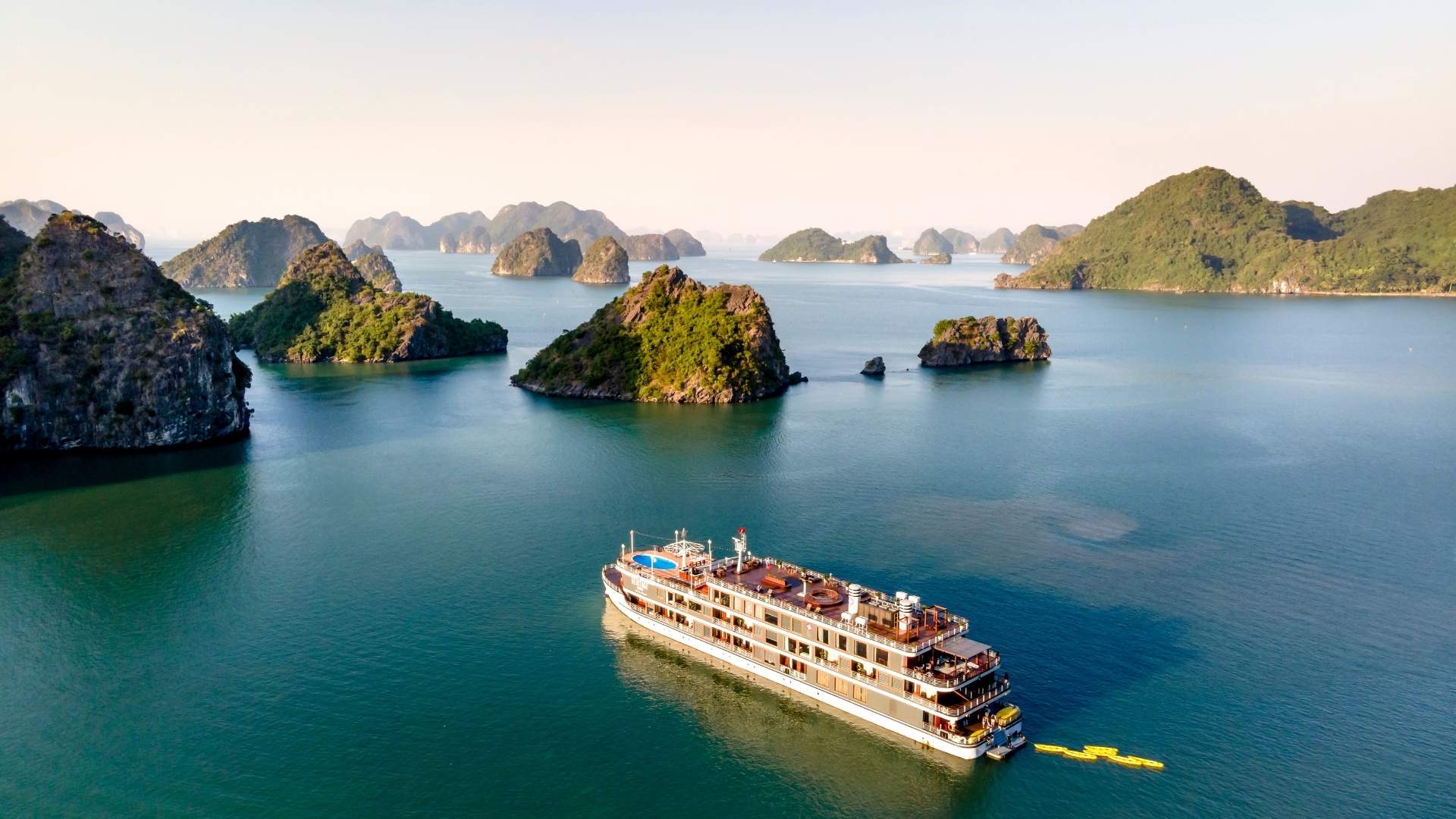
No 14-day Vietnam itinerary is complete without a trip to Halong Bay, a UNESCO-listed site known for its limestone islands rising from emerald waters. The best way to explore the bay is by taking an overnight cruise, which allows travelers to see remote parts of the area while enjoying activities like kayaking, cave visits, and seafood dinners.
Most cruises include stops at famous attractions such as Sung Sot Cave, known for its impressive rock formations, and Ti Top Island, which offers panoramic views of the bay. For those who prefer a quieter experience, Lan Ha Bay, located nearby, offers similar scenery with fewer crowds.
Discover the caves of Phong Nha
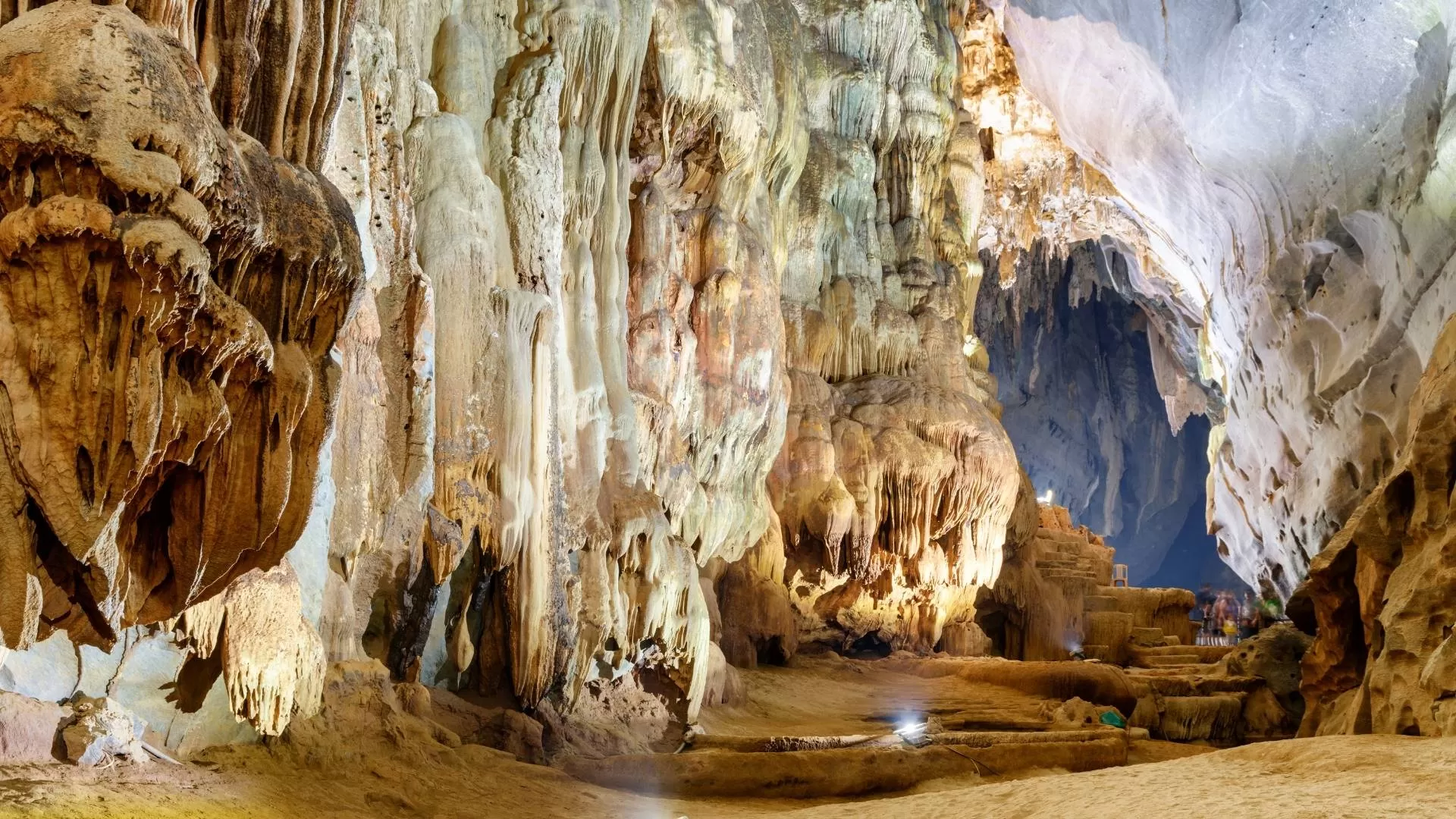
Phong Nha-Ke Bang National Park is home to some of the world’s largest and most impressive caves. The park is a UNESCO-listed site, featuring massive karst formations, underground rivers, and hidden chambers.
Phong Nha Cave and Paradise Cave are among the most accessible, with well-lit paths showcasing unique rock formations. More adventurous travelers can explore Hang En or Son Doong, the world’s largest cave, though visiting Son Doong requires a special guided expedition.
Explore the imperial landmarks of Hue
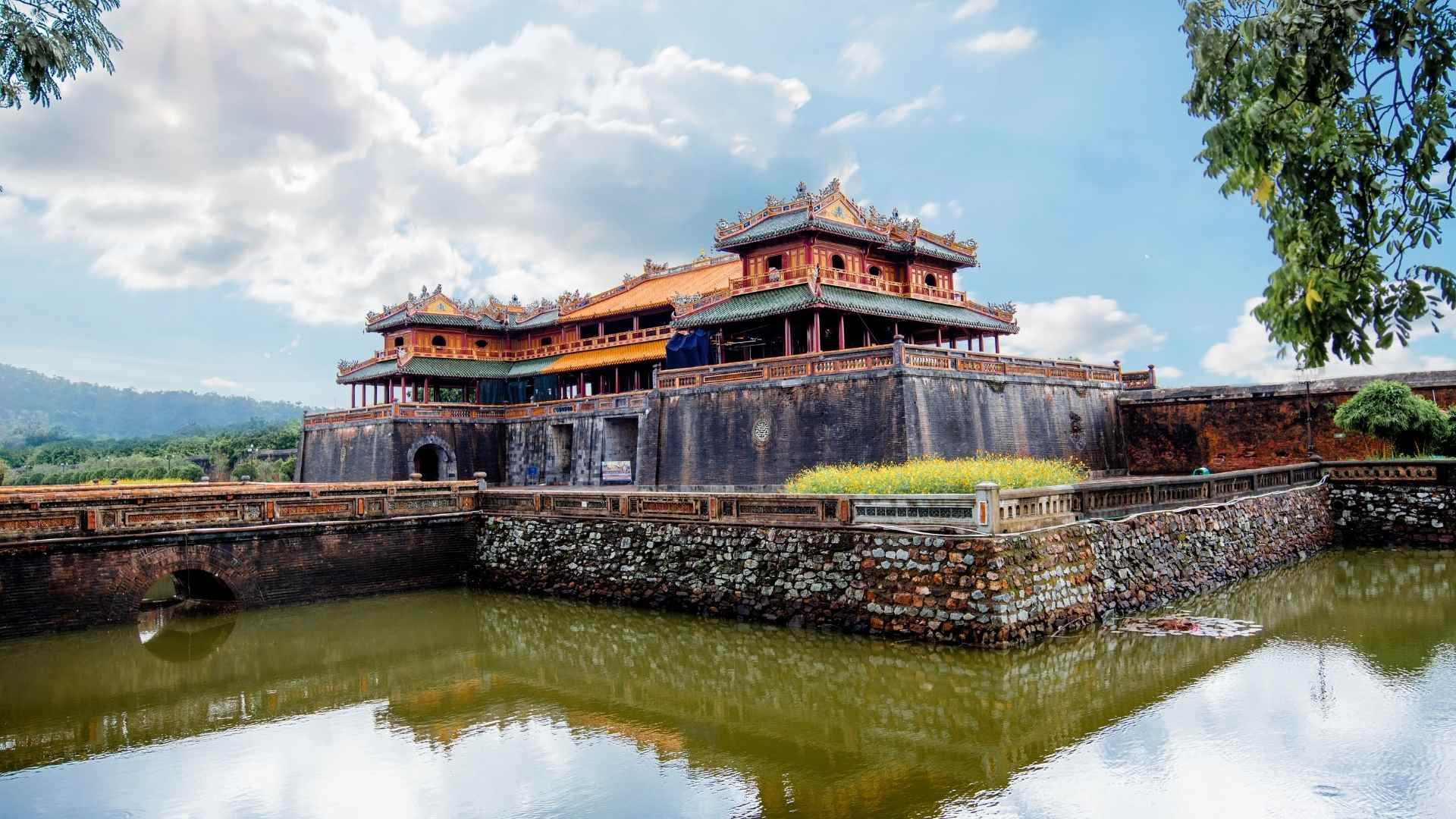
Hue, once the imperial capital of Vietnam, is home to important historical landmarks. The Imperial City, surrounded by a moat and thick stone walls, was the seat of the Nguyen Dynasty. Inside, visitors can explore old palaces, temples, and royal gates that reflect the grandeur of Vietnam’s past.
Beyond the Imperial City, Hue has several royal tombs, each designed with unique architecture. The Tomb of Khai Dinh, for example, features a mix of Eastern and Western influences, with intricate mosaics decorating the walls. A boat ride along the Perfume River offers a relaxing way to visit these sites while enjoying views of the countryside.
Relax on the beaches of Da Nang
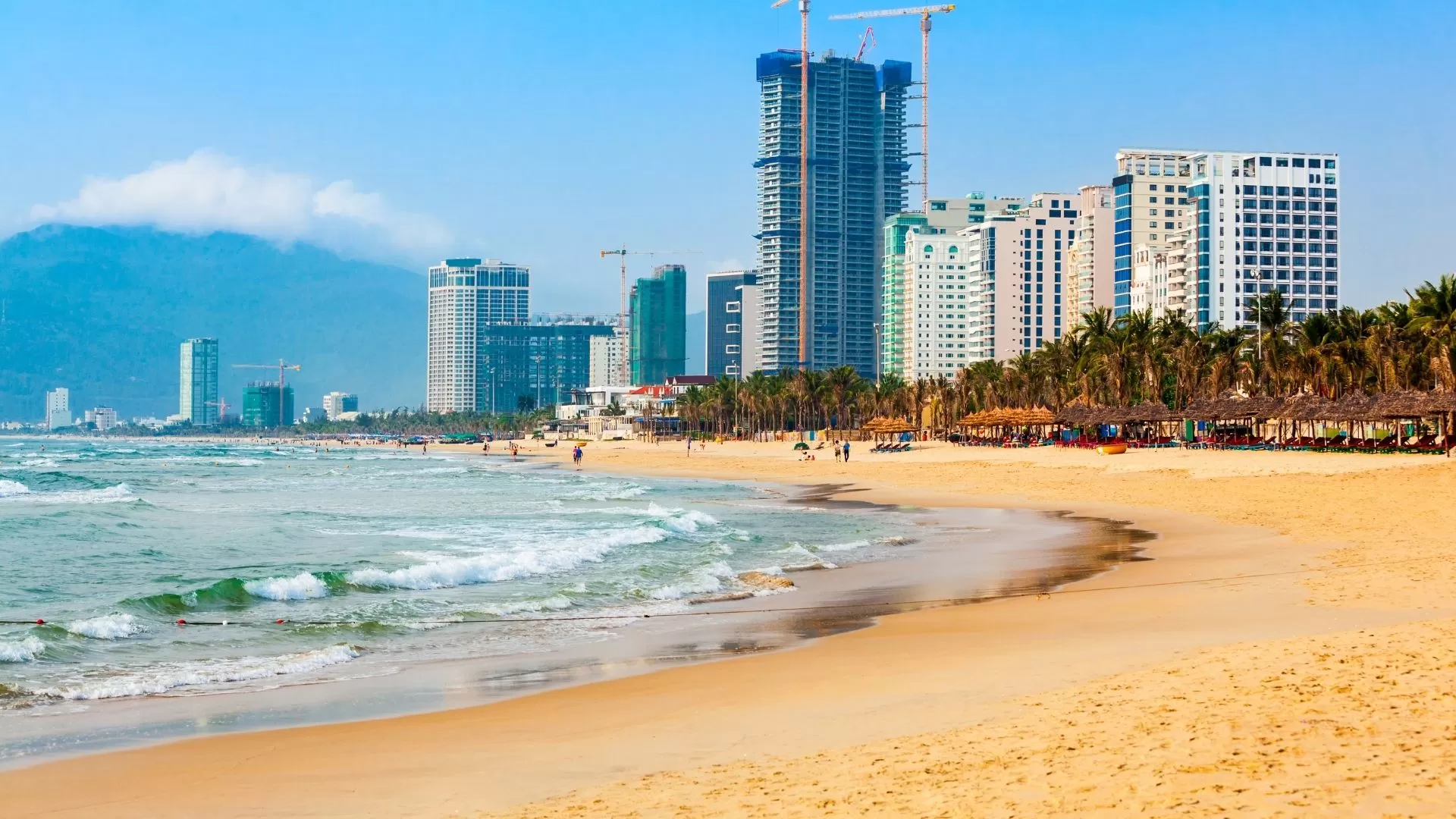
Da Nang is a great stop in the 14-day Vietnam trip, offering soft sand, clear waters, and a laid-back atmosphere. My Khe Beach, stretching for several kilometers, is one of the most popular spots for swimming, sunbathing, and water sports. Those looking for a quieter experience can visit Non Nuoc Beach, which is less crowded and offers a peaceful setting for a walk along the shore.
Beyond the beaches, Da Nang serves as a great base for exploring nearby attractions. The Marble Mountains, a cluster of limestone hills, are home to caves, pagodas, and viewpoints overlooking the coastline. A short drive away, the Son Tra Peninsula offers scenic hiking trails and a chance to see the famous Linh Ung Pagoda, which houses a towering statue of the Lady Buddha.
Stroll through Hoi An’s ancient town
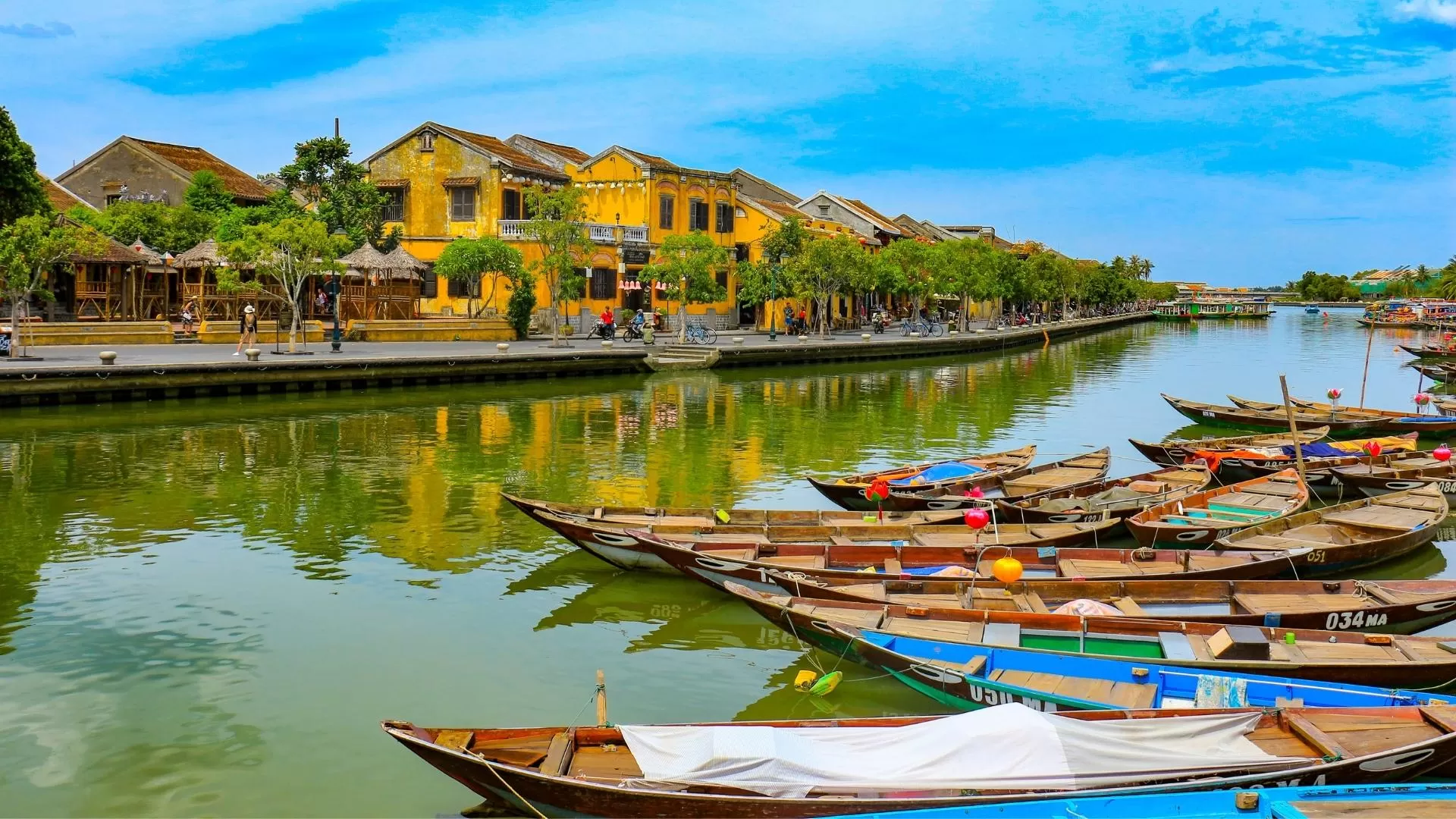
Hoi An is an unmissable destination to visit in the Vietnam 2-week itinerary. It is famous for its well-preserved old town, with narrow streets lined with wooden houses, colorful lanterns, and historic sites. The Japanese Covered Bridge is one of the most recognizable landmarks, while traditional assembly halls showcase the town’s trading history.
A visit to Hoi An is also a great opportunity to get custom-made clothing, as the town is known for its skilled tailors. In the evening, the town comes alive with lanterns reflecting on the river, creating a peaceful atmosphere.
Uncover the ruins of My Son Sanctuary
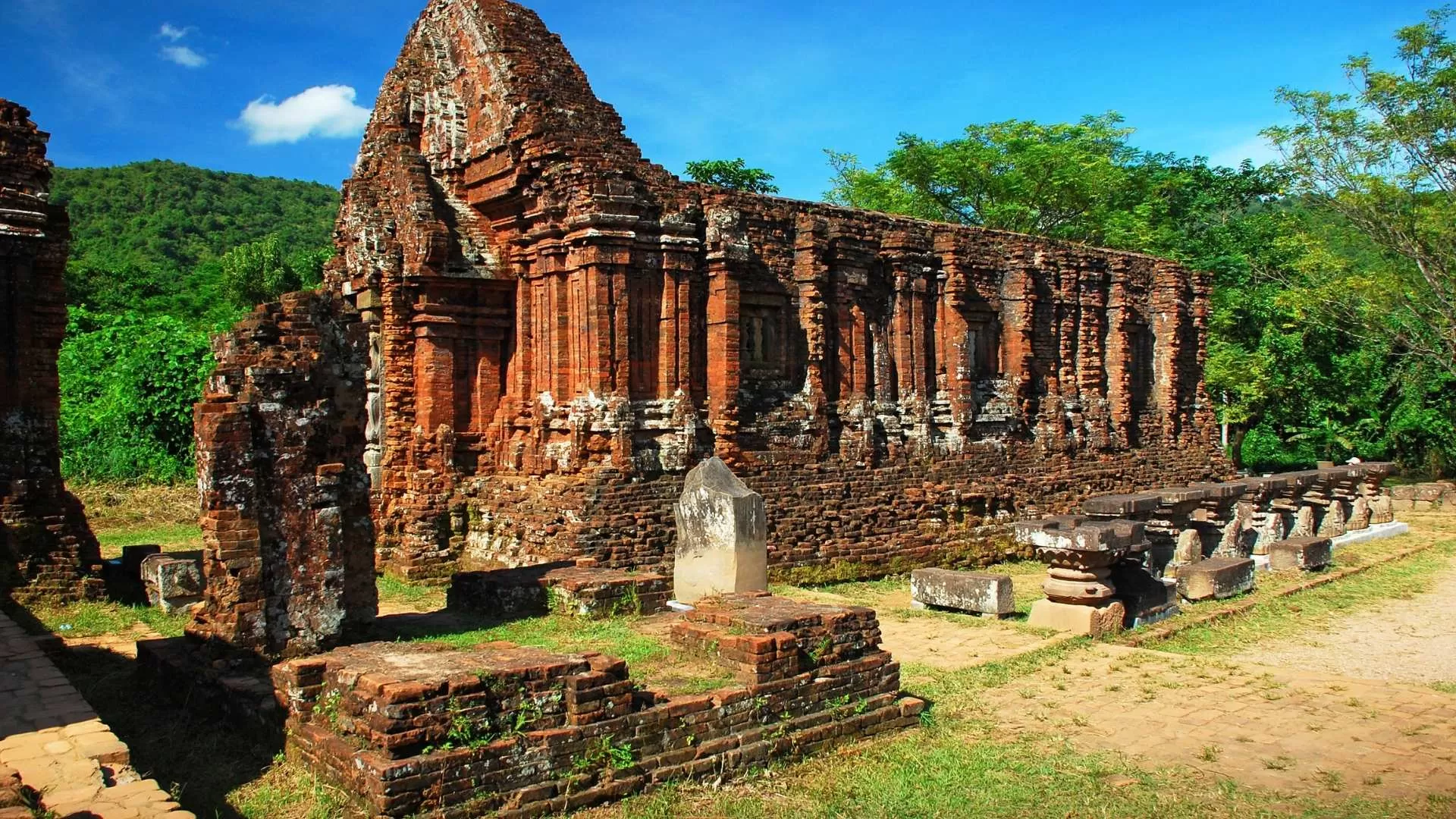
My Son Sanctuary is one of Vietnam’s most significant archaeological sites, featuring ancient Hindu temple ruins built by the Champa Kingdom. Located in a valley surrounded by hills, My Son was once a spiritual and political center, with structures dating back over a thousand years.
The site consists of red brick temples, stone carvings, and decorative statues, many of which have been partially restored after years of damage. While some structures remain in ruins, the historical importance of the site makes it a must-visit destination. Walking through My Son provides insight into the Cham civilization and its influences, particularly its connections to Hinduism.
Savor the flavors of Vietnam’s local cuisine







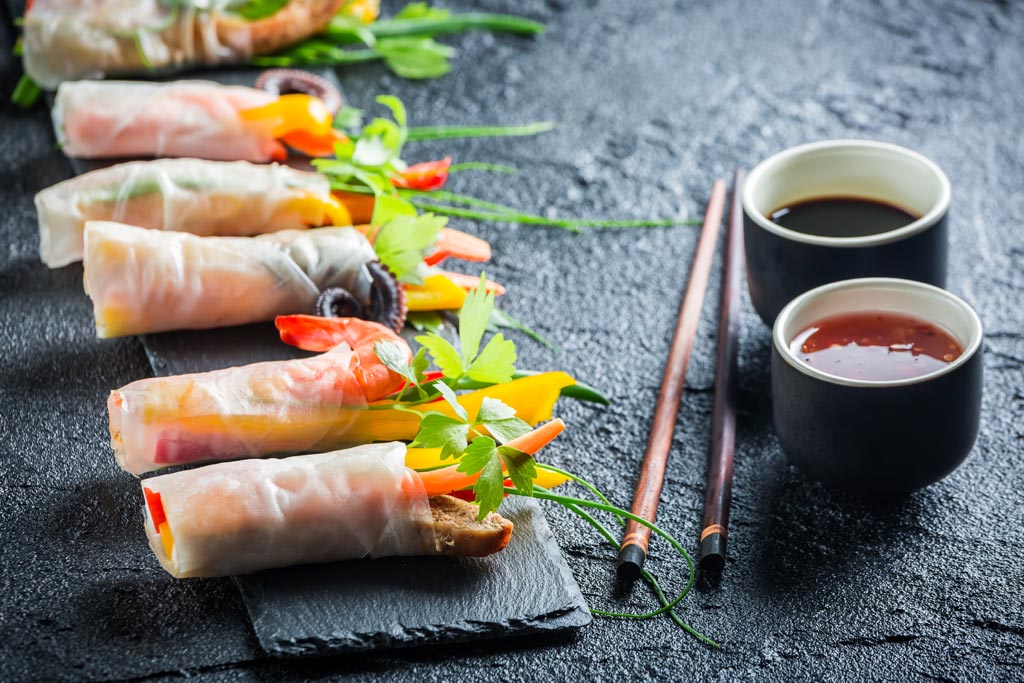
Vietnamese cuisine is known for its balance of flavors, fresh ingredients, and diverse regional specialties. From bustling street markets to local restaurants, travelers following a Vietnam 2-week itinerary will have plenty of opportunities to enjoy authentic dishes throughout their journey.
MUST-TRY VIETNAMESE DISHES |
|
Trying these dishes adds a flavorful experience to any Vietnam 2-week travel plan, allowing visitors to explore the country through its diverse food traditions.
Two weeks in Vietnam: The perfect itinerary for a memorable trip
For those looking for a well-structured journey, a Vietnam tour 14 days covers the country’s top UNESCO-listed sites and scenic landscapes. It allows travelers to explore historical landmarks and natural wonders while making the most of their Vietnam 2-week itinerary with a carefully designed schedule.
Day 1: Arrival in Hanoi
Day 2: Hanoi – City exploration
Day 3: Hanoi – Ninh Binh (Trang An landscape complex) – Hanoi
Day 4: Hanoi – Halong Bay Cruise
Day 5: Halong Bay – Hanoi
Day 6: Hanoi – Flight to Dong Hoi – Phong Nha
Day 7: Phong Nha National Park – Discovery of the caves
Day 8: Phong Nha – Hue
Day 9: Hue – Imperial landmarks
Day 10: Hue - Da Nang - Hoi An
Day 11: Hoi An – Saga Bamboo Day
Day 12: Hoi An – My Son Sanctuary
Day 13: Hoi An – Free time for personal activities
Day 14: Hoi An – Da Nang – Departure
For those seeking a more diverse journey, these 15-day tours offer a combination of well-known attractions and lesser-explored destinations:
The Vietnam tour 15 days with Pu Luong takes you through Hanoi, Halong Bay before immersing you in the peaceful landscapes of Pu Luong Nature Reserve, where terraced fields and remote villages provide a deeper connection to local life, then continuing to central Vietnam.
Meanwhile, the Vietnam tour 15 days with Sapa combines must-visit destinations with an adventure to Sapa’s mountainous region, where ethnic minority communities and breathtaking rice terraces create an unforgettable experience.
📌 At Hanoi Voyages, we specialize in designing personalized travel experiences that reflect your unique preferences. If this tour isn't exactly what you're looking for, we're eager to create a custom itinerary just for you. Contact us now to begin planning your Vietnam trip!
How much does a Vietnam 2-week itinerary cost?
Vietnam is a great destination for all types of travelers, offering a mix of affordability and quality experiences. Below is an estimate of the costs for a Vietnam 2-week itinerary, covering accommodation, food, activities, and transportation.
Accommodation
Vietnam has a wide range of accommodations to suit different travel styles:
Budget travelers: Hostels or homestays cost around $5 to $11 per night, totaling $80 to $165 for 2 weeks.
Mid-range comfort: Standard hotels range from $16 to $44 per night, adding up to $240 to $650 for the trip.
Luxury stays: High-end hotels and resorts charge between $65 and $165 per night, amounting to $980 to $2,500 for 14 nights.
Transportation
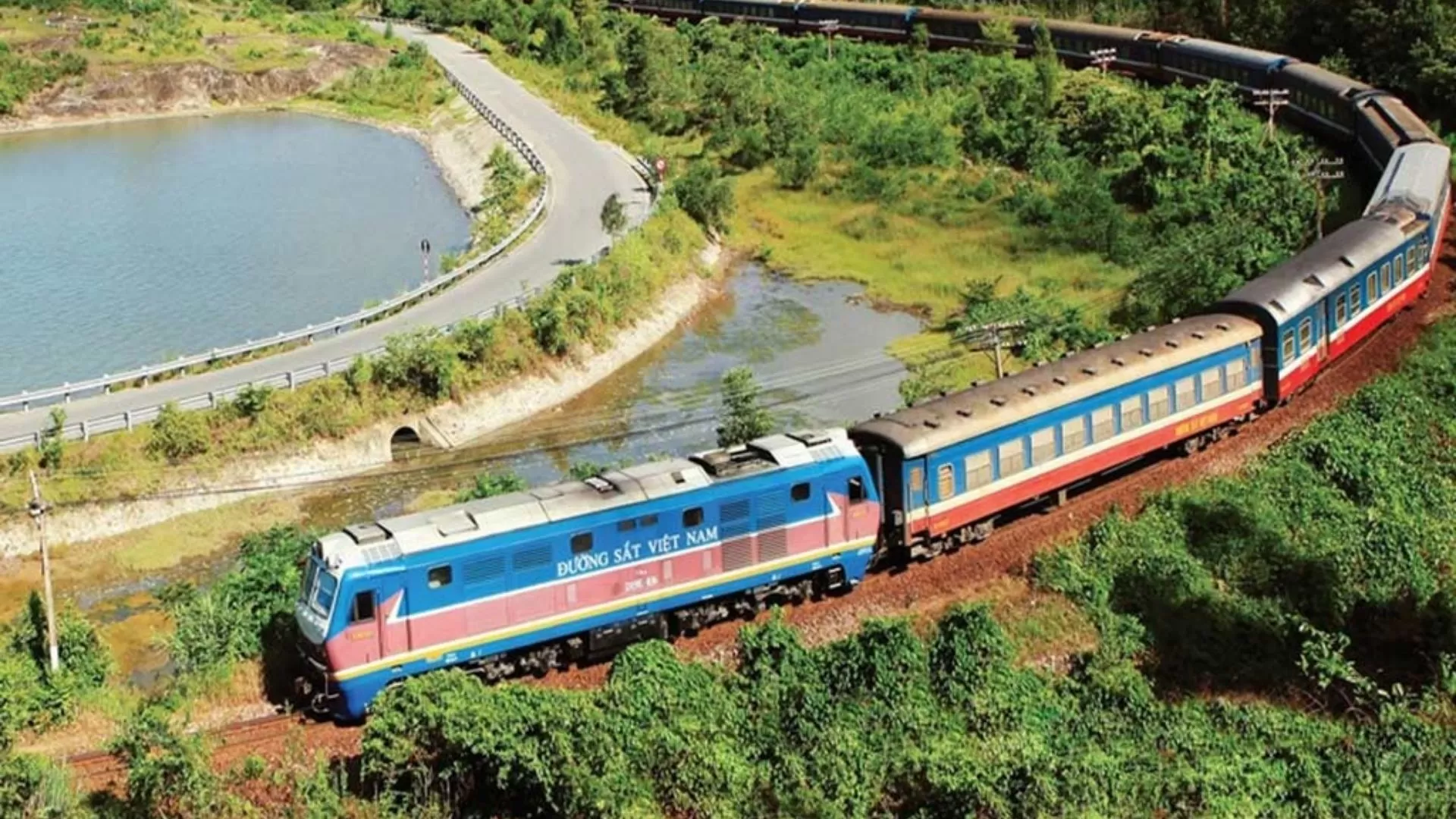
Traveling within Vietnam is convenient and affordable:
Public transportation: Long-distance buses cost $11 to $22 per ride, while train tickets range from $16 to $44, adding up to $110 to $220 for 14 days.
Domestic flights: Tickets between Hanoi, Danang, and Ho Chi Minh City cost $125 to $200 per flight, totaling $250 to $400 for two flights.
Scooter rental: Renting a scooter costs $5 to $11 per day, coming to $80 to $165 for 15 days, including fuel.
Food
Vietnamese cuisine is both flavorful and budget-friendly, with options for every price range:
Street food: Popular dishes like pho or banh mi cost $1 to $3 per meal, totaling $50 to $95 for 2 weeks.
Local restaurants: Meals in traditional restaurants range between $5 and $11 per meal, reaching $240 to $490 for three meals a day.
Fine dining: High-end restaurants charge $16 to $33 per meal, amounting to $720 to $1,400 for 14 days.
Activities and excursions
There are plenty of things to do in Vietnam, with costs varying based on the type of experience:
Cultural and historical sites: Entrance fees for temples, pagodas, and museums range from $1 to $5 per site, totaling $30 to $55 for the trip.
Guided excursions: Day tours, such as exploring traditional villages or mountains, cost $20 to $55 per tour, with five excursions adding up to $110 to $275.
Halong Bay cruise: A 2-day, 1-night cruise costs between $100 and $200, including meals and activities.
👉 Learn more: Vietnam travel budget: How much to spend on your trip?
Travel tips for a Vietnam 2-week itinerary
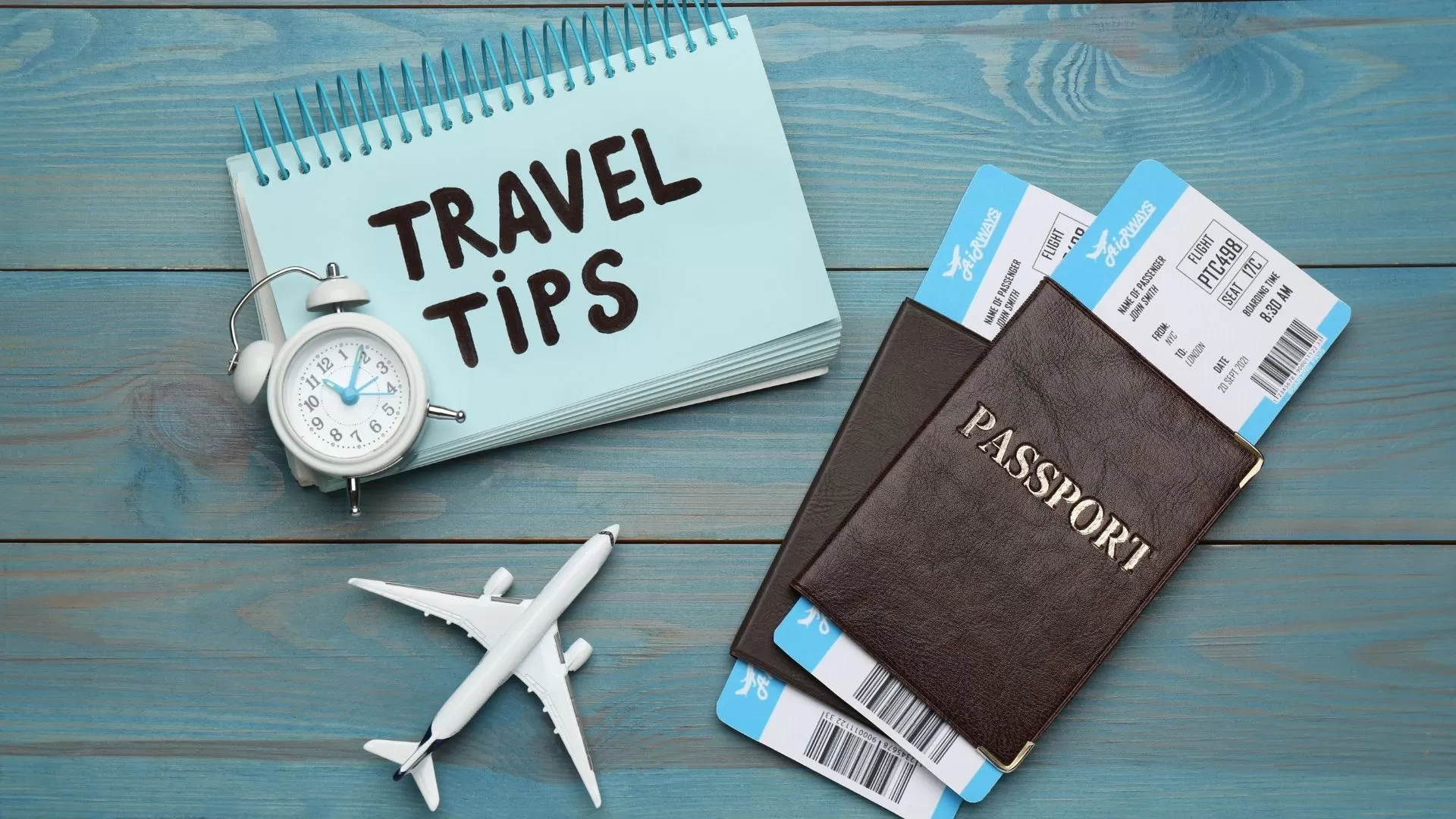
A well-organized Vietnam itinerary 14 days helps ensure a smooth and enjoyable trip. From visas to money matters, here are the key things you should know before you go.
Visa for Vietnam
Visa requirements vary depending on nationality. Some travelers can enter Vietnam visa-free for short stays, while others need to apply for an e-visa online. If you're planning a longer stay, you may need to apply for a visa on arrival with a pre-approved letter. It’s always a good idea to check the latest visa policies before your trip to avoid any issues.
SIM card and Internet access
Staying connected in Vietnam is easy thanks to reliable and affordable mobile internet. You can purchase a SIM card upon arrival at the airport or at local stores from major providers like Viettel, Vinaphone, and Mobifone. Their data packages offer strong coverage, even in rural areas. If you prefer a hassle-free option, consider using an eSIM, which allows you to activate mobile data without needing a physical SIM card. This is especially useful for travelers who want to avoid swapping out their primary SIM.
Currency exchange and withdrawals
Vietnam’s official currency is the Vietnamese dong (VND). While credit cards are accepted in hotels, shopping malls, and some restaurants in major cities, cash remains essential for markets, street food vendors, and local transportation. ATMs are widely available, but be mindful of withdrawal fees. To get the best exchange rates, it's advisable to exchange currency at banks or official exchange offices rather than at the airport.
👉 For more details: All about currency exchange in Vietnam: What you should know?
Other practical tips
Learn a few Vietnamese phrases: Even basic words like “Cảm ơn” (thank you) can make interactions with locals more pleasant.
Be mindful of traffic: Crossing the street can be overwhelming due to the constant flow of motorbikes. Walk slowly and steadily to let vehicles adjust around you.
Respect local customs: When visiting temples or pagodas, dress modestly and remove your shoes before entering.
Use ride-hailing apps: Apps like Grab and Be are convenient for getting around cities without the hassle of negotiating taxi fares.
A trip through Vietnam offers a rich combination of flavors, traditions, and scenic landscapes. With a carefully planned Vietnam 2-week itinerary, you can experience everything from dynamic cities to tranquil coastal areas and historic landmarks. Every destination adds a new perspective, making the journey both engaging and memorable. With Hanoi Voyages, everything is well-prepared, allowing you to travel with ease.
Contact us to start planning your dream trip to Vietnam!
Dream about your trip to Asia, in private
We are here to make it happen with youFREE QUOTE, WITHOUT OBLIGATION







.webp)
